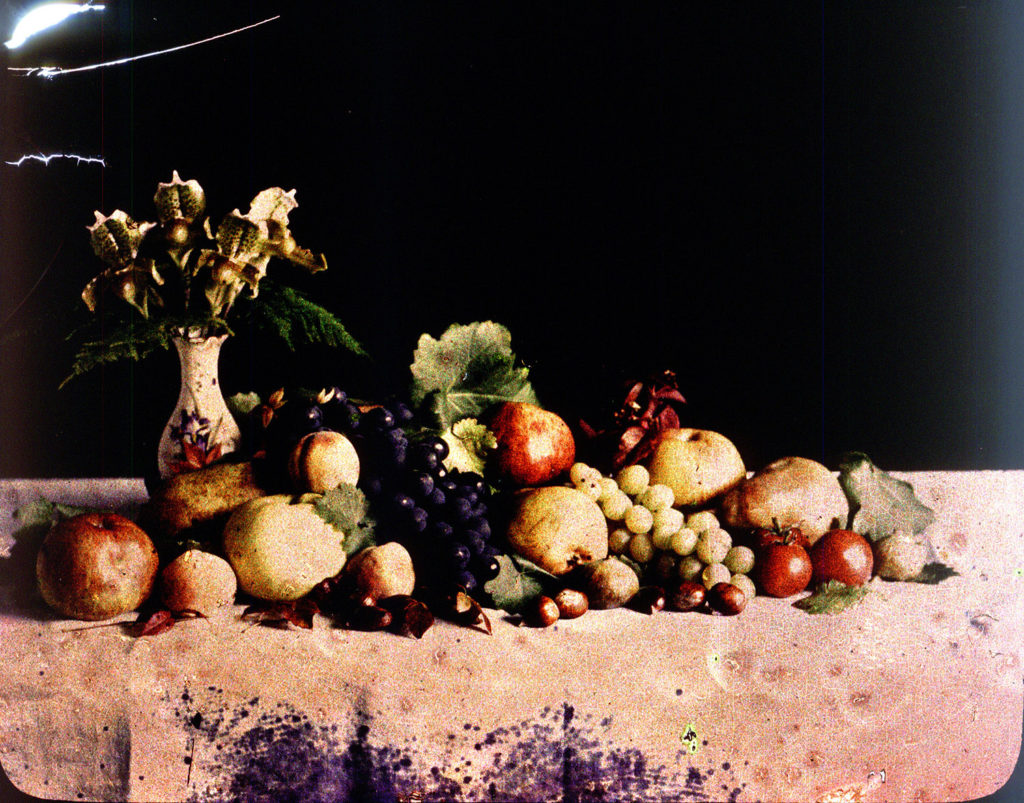When was Auto-Chrome first invented:
On the 10th of June 1907, An audience of 600 was invited to watch brothers Louis and August Lumière, develop their newest invention which was a combined system which was an additive colour screen process. However the Lumière brothers first patented the Auto-Chrome in 1903 and presented the discovery to Académie des Sciences in 1904.
The first Auto-Chrome colour image in Jersey was done in 1904 by Emile Guiton, was of Fruit.

History of Auto-Chrome:
In 1907, the invention of Auto-Chrome was reaching worldwide audiences in different areas, such as photographically, scientific and culturally. A chemist called Fritz Wentze wrote of the ‘tremendous enthusiasm’ for the first colour plate, and spoke “this was an experience of which only someone who was living at the time can have a very clear idea”.
Autochrome plates are covered in microscopic red, green and blue coloured potato starch grains. When the photograph is taken, light passes through these colour filters to the photographic emulsion. The plate is processed to produce a positive transparency. Light, passing through the coloured starch grains, combines to recreate a full colour image of the original subject.
Do an Autochrome photo didn’t require any special equipment, the photographers could use their existing cameras. However they did have to remember to put the Autochrome plate in the camera, with the glass side nearest the lens.
Cost of Autochrome:
Due to the manufacturing process for the Autochrome, it became more expensive than monochrome, therefore, the Autochrome plates were sold in a box of 4 rather than the usual 12. In 1910, a box of 4 quarter plates cost 3 Shillings (15p), whereas if you wanted a dozen monochrome plates it was 2 Shillings (10p).
